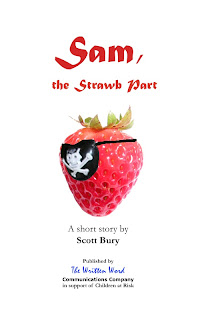Once again, I'm happy to welcome the fabulous, prolific Regan Taylor to Book Blather. What's the story behind the book Her Eyes? Keep reading and you'll find out.
When I was working as a police dispatcher we’d receive calls every evening asking “any news”? A sergeant would provide whatever information could be released. Sometimes we’d joke about why bother with a true story when a made up one would be better.
Enter the world of the fiction writer. Sometimes the stories you hear on the news are just too good to pass up and merit a tale of some sort. HER EYES is one of those stories. Sometimes what seems like a less then thrilling news story can be the basis of a wonderful story. At other times, it can be a dramatic story that takes you on the path of a new book.
I’ve always been interested in reincarnation, past lives and in the past dozen years or so, walk-ins. Organ transplants have also always fascinated me. Sadly, in most cases, someone dies so that several others can live. Transplant surgery has come a long way in recent years. I’ve also always believed soul mates and that true love will always, somehow, win out. Many of my books have themes around soul mates, a few delve into past lives and they all center around a once in a lifetime romance.
In 2006 a fellow author, Jennifer Cloud, and I heard about the French woman who underwent the first facial transplant. We talked about the implications of the news in terms of what we write. Jennifer is a fabulous horror writer while I write romance. Slowly but surely HER EYES came into being. The news item fascinated me. What would it be like for the person? Once the pain and recovery from surgery was done, what would life be like for her? Would her personality change because her looks changed? Would it be conscious because she saw the surgery as a new beginning? Or would those changes happen for other reasons?
The title HER EYES evolved from the old saying “the eyes are the windows to the soul”. That adage has always resonated with me. If someone could look me in the eyes it would indicate honesty to me. They can convey so much if only you listen to what you see.
I began to ask myself if indeed the eyes are the windows to the soul, what more could you see by looking into their depths? Would you truly see the person or would you see something more? Especially if it was someone else’s eyes you were then looking into. Remember, I don’t write horror, but I do write about possibilities and soul mates. So I began to ask what if you missed your chance for true love because the other person died? Could they—would they—find a way back to you? Could love be so strong that it transcends even death? HER EYES was my opportunity to look at those questions and more through the safety of a fictional story. What I found was not only a happy ending for my characters but that other characters arose from Catherine and Frank’s struggles.
While writing HER EYES I did considerable research on organ donation and transplants. I initially thought that only the heart, lungs, kidneys and corneas were viable for donation. When I spoke with Ken Holmes, our retired county coroner about this he told me that in reality on average of 27 people could benefit from one person’s donation. 27 lives could be saved or given a fresh start by one donation. He spoke to me, in addition to other aspects, about skin grafts for burn victims. What an amazing gift to leave.
HER EYES is the intermingling of a news story I couldn’t forget and the blending together of several metaphysical theories near and dear to my heart.
To order Regan's books, visit her website, www.regantaylor.com. Regan also has a blog called Welcome to My World at: http://regantaylorsworld.blogspot.com
To order Regan's books, visit her website, www.regantaylor.com. Regan also has a blog called Welcome to My World at: http://regantaylorsworld.blogspot.com











